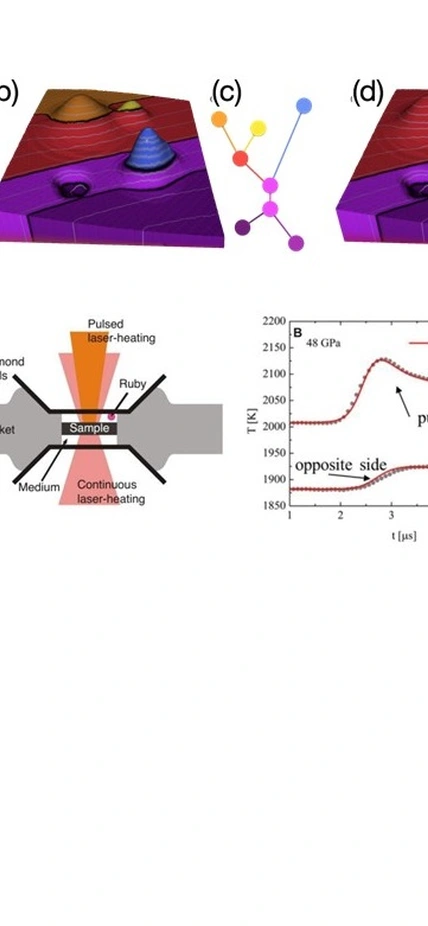The Venture Grant to Juna Kollmeier and Guillermo Blanc of the Observatories will allow them to collaborate with others to apply a new astronomical data extraction technique to optical astronomy data sets that are currently inaccessible. The new techniques will allow superior visualization and analysis of distant astronomical objects. The Geophysical Lab’s Alex Goncharov and Terrestrial Magnetism’s Peter van Keken were awarded a Venture Grant to apply a novel flash-heating method for high- pressure/high-temperature experiments to measure the thermal conductivity of Mars. They will then develop new models to understand why that planet cooled so fast and early.
Carnegie Science Venture Grants ignore conventional boundaries and bring together researchers from different backgrounds with fresh eyes to explore pressing questions. Each grant provides $100,000 support for two years. These projects are likely to grow in unexpected ways. The grants are generously supported, in part, by trustee Michael Wilson and his wife Jane and by the Monell Foundation.
Astrophysical Data Extraction
For decades, astronomers have taken 2-dimensional images through filters to try to understand the processes inside galaxies such as the ages of stars and whether they host black holes. But the image information is limited. To determine more detailed information on galaxies, such as their motions, finer frequency information is needed.
The researchers will use new mathematical techniques to interrogate data from Integral Field Unit Spectrometers (IFU). These instruments take spectra at multiple locations within a target such as a distant galaxy. The "data cubes" from these instruments are extraordinarily rich and complex and the team will be applying algorithms developed in mathematics and computer science to extract features and remove noise from these astrophysical data.
The researchers learned of the method during a visit to the Scientific Computing and Imaging Institute (SCI) at the University of Utah, where Bei Wang Phillips and collaborator Paul Rosen have been working to analyze similar data cubes taken at radio frequencies with the ALMA telescope in Chile. These techniques are only accessible to the Carnegie researchers via collaboration with SCI. They hope this is the beginning of an exciting joint venture with SCI on theoretical and observational data analysis.
The funds will support a student to work closely with the team to apply the new mathematical techniques to optical spectroscopic data.
New Experiments to Model Mars’s Thermal Evolution
The rate at which a planet loses heat determines its internal structure and its geologic activity. Compared to Earth, the geologic activity on the Moon and Mars stopped long ago as did Mars’s magnetic field, probably from an abrupt decrease of heat flow. To understand what happened to Mars requires information on its interior structure and the mechanism and rate of the cooling. Thus far, such information is insufficient.
Modelling planetary dynamics requires the knowledge of surface heat flux, which is highly uncertain at high pressure and temperature conditions of the mantle and core. Goncharov and van Keken will use their Carnegie Science Venture grant to measure olivine, the dominant Martian mantle mineral at high pressure and temperature using a novel technique. They will use the results to develop thermal evolution models for Mars.
The new technique is a flash-heating method. A sample is compressed in a diamond anvil cell then continuously heated from both sides by an infrared laser to a stable temperature. Then, a second infrared laser delivers a pulse to one side of the sample generating a thermal disturbance. This innovation will enable the most accurate experimental measurements of thermal conductivity to date. They will then create 3-D thermal evolution models of the Moon and Mars.
NASA will launch the InSight mission to Mars in May of 2018, providing the first seismic and surface heat flux data. The subsequent Carnegie model will incorporate InSight seismic results and surface heat flow measurements. This award will support a new GL-DTM postdoc and will contribute to regular diamond replacements, and to the team’s travel budget.
